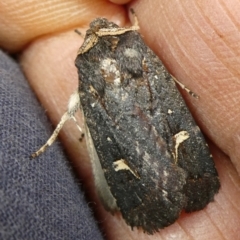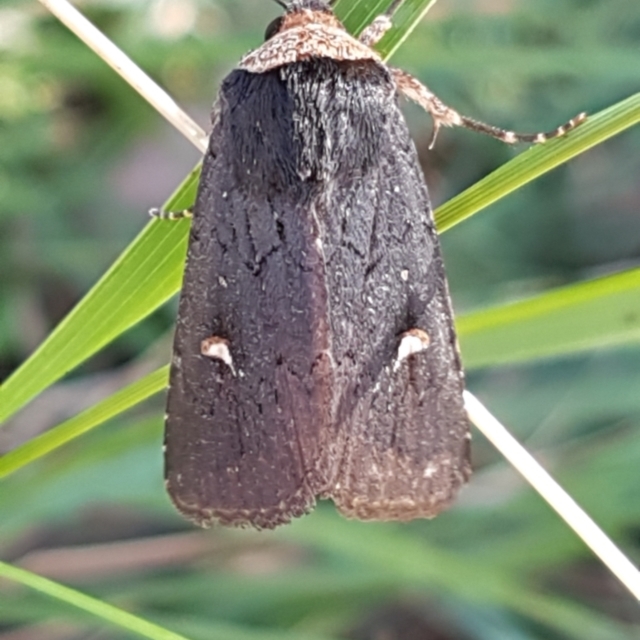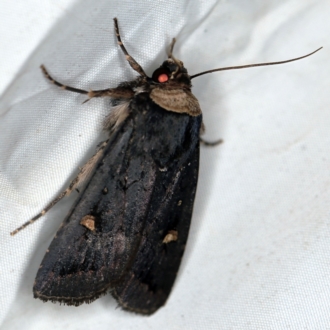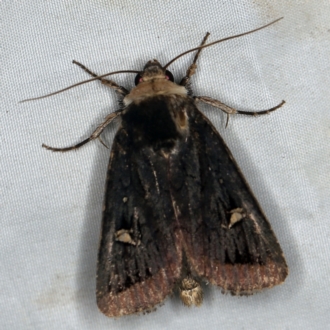Proteuxoa testaceicollis (Tawny-coloured Noctuid)
Proteuxoa cineriecollis, testaceicollis, atra and bistrigula are similar species that are difficult to separate, especially if the only information available is an upperside photo of a settled closed-winged moth. Proteuxoa restituta also has a similar forewing pattern but can be relatively easily distinguished by its shiny grey base colour with wavy transverse lines showing clearly. All these species have a prominent lighter reniform mark that narrows down to a "tail" pointing in the direction of the tip of the abdomen in some but far from all specimens. They all have underlying networks of wavy transverse lines which show more clearly in the males than in the generally darker females. The males also more readily show a broad lighter band along the termen. Proteuxoa testaceicollis, atra and bistrigula all have dark hindwings (P. atra darkest). P. cineriecollis hindwings are mostly white but this is usually not shown in photos.
A feature that can be seen on most photos of these moths is the colour of the "collar" - a band of scales across the front of the thorax. In Proteuxoa cinereicollis it is a light grey that contrasts strongly with the rest of the thorax; in P. testaceicollis it is a contrasting light brown; in P. atra it is the same black as the rest of the thorax; and in P. bistrigula it is the same dark brown as the rest of the thorax. BUT BEWARE that some P. bistrigula collars are a little lighter at the rear fringe of the collar and this can be picked up strongly in a flash photo.
Another usually visible feature is the shape and colour of the reniform mark. In P. testacaecollis it is the largest amongst these species and has a triangular shape. In P. cinereicollis it is tear-drop shaped, variably solid or dark centred, and usually with a distinct “tail”. In P. bistrigula it is a curved slash. In P. atra it is again a curved slash, but darker than for the other species in line with P. atra’s overall darker colour. BUT BEWARE that some P. bistrigula and cinereicollis specimens have a reniform mark that is darker than the usual whitish colour.
Proteuxoa testaceicollis is generally browner than the blacker P. cineriecollis, and the males do not display the light grey area on the inner margin that characterises P. cineriecollis males. It has broader forewings than P. cinereicollis, but that is not usually seen in live photos. It has been recorded a few times on Black Mountain and ranges mainly on the coast and nearby mountains from around Moruya to southern Queensland.
More detailed information on the appearances of all these species is contained in Moths of Victoria vol9. As they are difficult to distinguish in live photos, the identifications of them here on CNM are provisional.
Proteuxoa testaceicollis is listed in the following regions:
Canberra & Southern Tablelands
Species information
- Proteuxoa testaceicollis Scientific name
- Tawny-coloured Noctuid Common name
- Not Sensitive
- Local native
- Non-invasive or negligible
- Up to 803m Recorded at altitude
- Machine learning
- External link More information
















